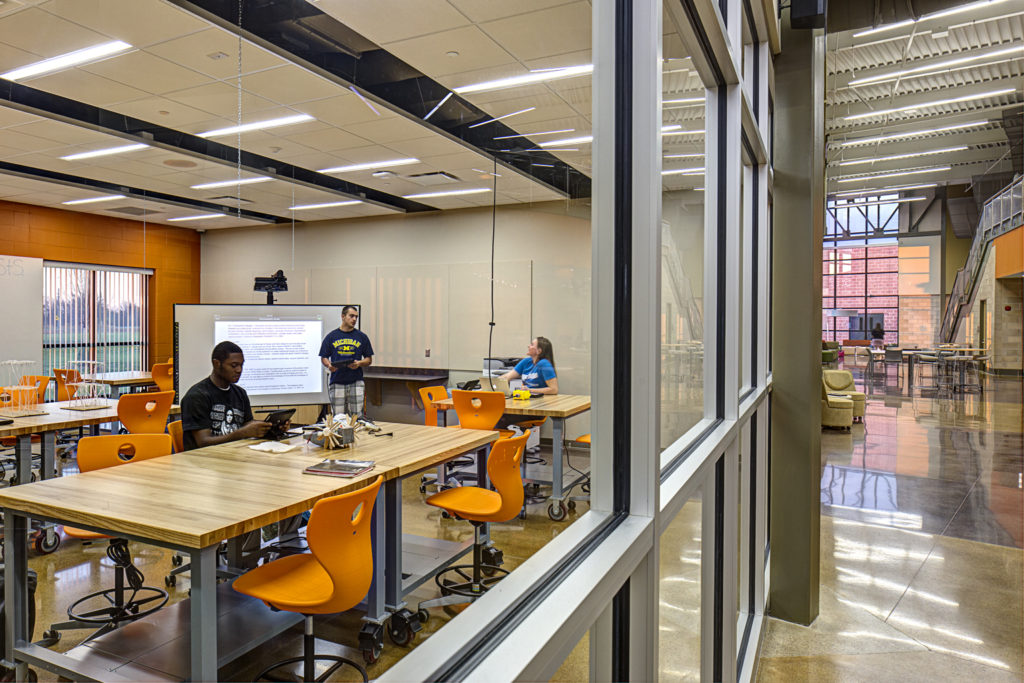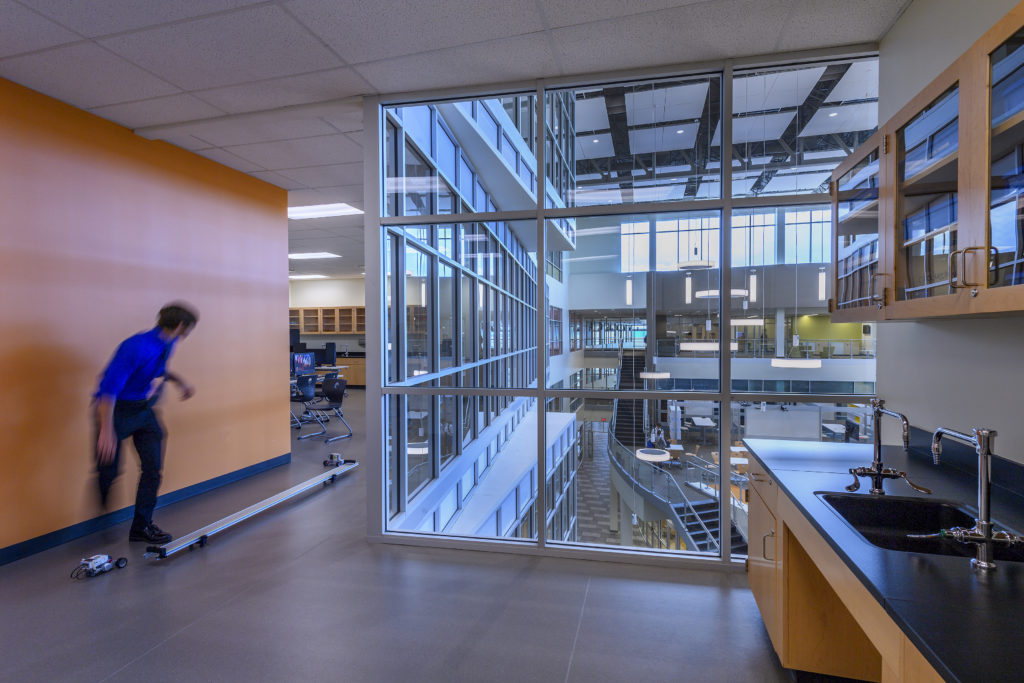Insights
How Technology Is Changing High School Education
By Jeff Schloffel, RCDD
Technology is always changing, but the pace at which it progresses seems to keep accelerating. With tech products going from concept to R&D to marketplace in a fraction of the time it once took, the pace shows no signs of slowing down.
For school designers, the implications go beyond things like the viability of big computer labs in a high school media center. Technology is literally changing how we interact, including how students are learning and how teachers need to teach.
Learning in the digital age
It’s often said that Millennials are the first digital natives, but Generation Z (those born after 2000 and sometimes called Centennials) was the first generation born into this technology-driven world. These students grew up in an era of high-speed internet, where they have instant and constant access to information.
High school education has been changing to adapt to these shifting capabilities and attitudes, with teachers serving more as guides helping groups of students collaborate, rather than lecturing at the front of the room. To be successful with this new instruction method, teachers need to understand and embrace the technology their students are using, and apply it to their classrooms. The goal of the teacher should be to always know the technology at as high of a level as those they’re instructing, in order to be successful.

Technology in career training
In the past, industrial arts classes encouraged students to gain a base level of knowledge in practical skills like woodworking, auto repair, electronics and metal work. There is now a need for the current generation of students to do the same with a technology-focused skillset that they’ll need for careers in the second quarter of the 21st century.
Schools should pursue a curriculum where skills like understanding databases, working in spreadsheets and word processing form the base of career-focused training. Districts that have the resources can even take on initiatives like a robotics class. The price point for entry is lower than ever before with options like affordable 3-D printers, with which students can manufacture the parts they need right in the classroom.

Being creative with resources
In general, school corporations are not adapting fast enough to the progression of technology. Part of this is due to the perennial challenge that public schools face: a lack of sufficient funding to be first adopters (or sometimes even second or third wave) of new tech. So if this is your district, how do you keep up?
As the director of Fanning Howey’s technology group, I tell teachers and administrators to be as creative as possible with the technology you can afford. Some educators are using smart boards that, while somewhat outdated, still succeed in getting students out of their seats, in front of the classroom and interacting with a hands-on lesson. Schools can also create extended learning areas with booths where a small cluster of students can discuss a project on a wall monitor.
The point is to not be held back by not having the newest or flashiest tech toys in the classroom, but to instead use the pieces you do have to engage students at the level they’re used to. As administrators, educators and school designers, we need to be constantly rethinking the process of teaching in order to be adaptive to the way that modern students absorb, retain and apply knowledge. Only then can we increase learning and prepare these students for the future.
Designing School-Based Health Centers
By Dan ObrynbaSchool-based health centers are becoming integral components of public schools, primarily serving the needs of students and staff, with the potential to also serve the broader community. School-Based Health Centers are usually run by separate
Full ArticleEsports Facilities for Student Engagement
By Steven HerrAs competitive esports becomes a viable career path, educators across the country are embracing these gaming trends and expanding esports programming at their schools. Schools that have adopted esports are already seeing the benefits. According
Full ArticleSmart Schools Roundtable: School Safety by Design
By Zachary SprungerThe tragedy at Robb Elementary School in Uvalde, Texas, has once again brought the issue of school security into the national conversation. In 2020, Fanning Howey hosted a school security webinar featuring Michael Dorn, Executive
Full Article